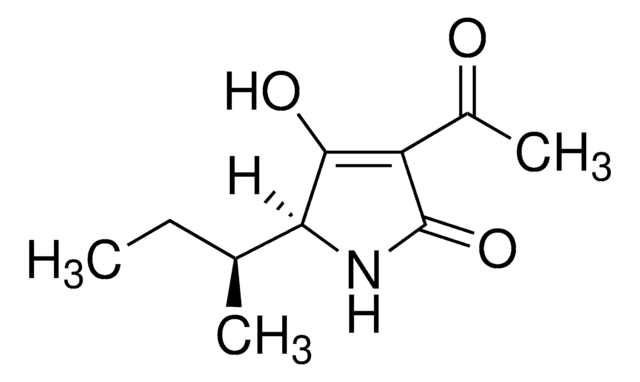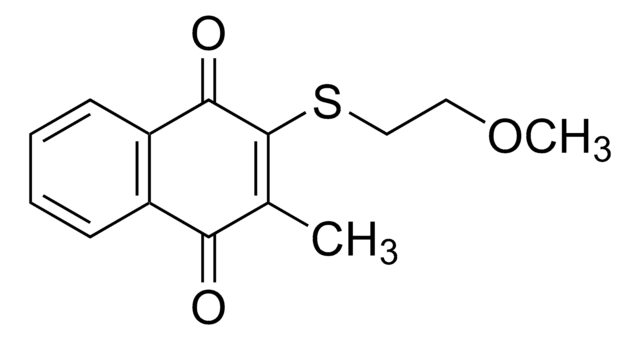47775
Menadione (K3)
analytical standard
Synonym(s):
Menadione, 2-Methyl-1,4-naphthoquinone, Vitamin K3
About This Item
Recommended Products
grade
analytical standard
CofA
current certificate can be downloaded
feature
standard type fat soluble vitamin
packaging
ampule of 1000 mg
technique(s)
HPLC: suitable
gas chromatography (GC): suitable
mp
105-107 °C (lit.)
application(s)
pharmaceutical (small molecule)
vitamins, nutraceuticals, and natural products
format
neat
storage temp.
2-30°C
SMILES string
CC1=CC(=O)c2ccccc2C1=O
InChI
1S/C11H8O2/c1-7-6-10(12)8-4-2-3-5-9(8)11(7)13/h2-6H,1H3
InChI key
MJVAVZPDRWSRRC-UHFFFAOYSA-N
Gene Information
human ... NQO1(1728)
Looking for similar products? Visit Product Comparison Guide
Related Categories
General description
Application
Signal Word
Warning
Hazard Statements
Precautionary Statements
Hazard Classifications
Acute Tox. 4 Oral - Aquatic Acute 1 - Aquatic Chronic 1 - Eye Irrit. 2 - Skin Irrit. 2 - Skin Sens. 1 - STOT SE 3
Target Organs
Respiratory system
Storage Class Code
11 - Combustible Solids
WGK
WGK 3
Flash Point(F)
Not applicable
Flash Point(C)
Not applicable
Personal Protective Equipment
Choose from one of the most recent versions:
Already Own This Product?
Find documentation for the products that you have recently purchased in the Document Library.
Customers Also Viewed
Protocols
Separation of (±)-α-Tocopherol, analytical standard; Menadione (K3), analytical standard; (+)-γ-Tocopherol, analytical standard; Cholecalciferol (D3), analytical standard
Our team of scientists has experience in all areas of research including Life Science, Material Science, Chemical Synthesis, Chromatography, Analytical and many others.
Contact Technical Service













